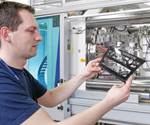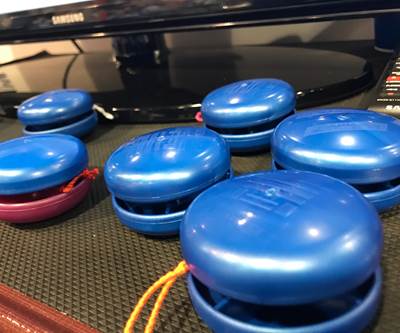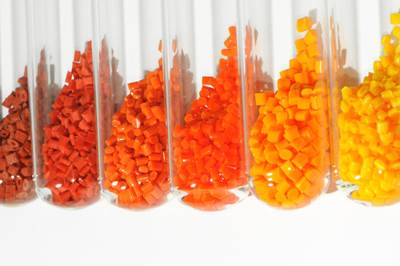Fundamentals of Proper Press Shutdown
Press shutdown procedures have a significant impact on achieving smooth machine startups and restarts to improve uptime. Here’s a procedure you might want to deploy in your molding operation.
In the fast-paced world of injection molding, the key drivers of a plant’s profits are downtime, efficiencies and scrap. A company’s success relies heavily upon quick and efficient startups. Elimination and avoidance of unplanned downtime events also plays a critical part in profitability.
Press shutdown procedures have a significant effect on achieving smooth machine startups and restarts. Moreover, presses shut down poorly quite often lead to process failures and downtime. This article will outline potential downtime events that have a direct relationship with poorly performed press stops. It will also provide a solid approach based on time that will help to reduce, and in most cases eliminate, scrap and downtime associated with press shutdown.
Screw Failures
A poor approach to screws is frequently the cause of unneeded downtime and failed startups. Shutting down without running the screw dry can lead to feed-throat bridging, which can require hours of servicing to remove melted plastic from the throat.
Presses shut down poorly quite often lead to process failures and downtime.
Leaving the carriage forward for long periods of time can lead to nozzle drool and material blowback on restart. Any time a press is shut down, it is wise to back the carriage off, remove material from the barrel, and retract the screw 1 in. to release pressure and help prevent drooling. At this point, the sprue bushing should be inspected and cleaned in preparation for restart.

Failing to pull back the carriage at shutdown can lead to blowback when the press is restarted.
The nature of some materials, such as nylon, acetal and PVC, may require purging the screw with an inert material like PP, PS or a purge compound to prevent degradation. Over time, that degraded material can cause screw and/or tip breakage, and even lock up the screw and barrel. That could ultimately necessitate replacement of both. It goes without saying that the costs and downtime associated with these types of repairs can be astronomical.
Hot-Runner Approach
Hot-runner care is crucial for mold-damage prevention. Hot runners that are left on for extended periods of time can perform poorly due to overbaked and/or degraded materials. In the case of polycarbonate, long heat exposure can cause contamination issues that lead to huge scrap events. High fiberglass content left in the hot runner can lead to plugged drops. Any one of these situations can lead to extra mold changes and unplanned mold maintenance.
Hot runners that are left on for extended periods of time can perform poorly due to overbaked and/or degraded materials.

Hot-runner controllers should be turned off during long shutdown periods. This will help to prevent degradation in the hot-runner manifold.
Mold Shutdown
Any time mold activity goes idle, it is time for mold inspection and care. Slide slots and ejector/ guide pins should be inspected for damage, galling, and lubrication. In-press mold storage is vital if the press is to be down for the longer term. The mold should be left with mold halves touching but not under pressure.
Water Shortfalls
Water shutdown is crucial to downtime and damage prevention. Long-term shutdowns can lead to unnoticed leaks. When a mold isn’t moving, water performance changes. This type of leak can lead to rust, which forces a mold to be pulled for service. Rust on a textured surface can cost thousands in tool repair and downtime.
Three-Stage Shutdown Procedure
The following procedures outline proper purging and shutdown of presses. There are three basic time frames that should determine the technician’s actions. These procedures have been developed based on using materials such as nylon. The purpose here is to reduce the number of purge approaches, while also instilling good shutdown habits. The cost of extra purge puddles is much cheaper than the cost of machine or mold repair and downtime associated with poor shutdown practices.

Purge should be removed from press bed to prevent sticking. Keep your press bed and area clean and free of debris. Best practice is to treat every day as if the customer will walk the floor at any minute.
If the press will be down for 30 min or less:
• Retract carriage to separate tip from bushing.
• Inspect tip for blowback.
• Run screw forward to remove shot from barrel.
• With screw empty, suck screw back 1 in.
• Remove purge from press bed.
If downtime length is unknown or longer than 30 min but less than 4 hr:
• Retract carriage to separate tip from bushing.
• Inspect tip for blowback.
• Purge throat and barrel completely dry with polypropylene.
• With screw empty, suck screw back 1 in.
• Shut off hot runner.
• Remove purge from press bed.
If downtime will be 4 hr or full shift:
• Retract carriage to separate tip from bushing.
• Inspect tip for blowback.
• Purge throat and barrel completely dry with PP.
• With screw empty, suck screw back 1 in.
• Shut off hot runner.
• Spray mold lightly with rust preventative.
• Close mold, not under tonnage, with mold faces touching.
• Shut off water at main valves.
• Remove purge from press bed.
Weekend Shutdown:
• Retract carriage to separate tip from bushing.
• Inspect tip for blowback.
• Purge throat and barrel completely dry with PP.
• With screw empty, suck screw back 1 in.
• Shut off hot runner.
• Spray mold with rust preventative.
• Close mold, not under tonnage, with mold faces touching.
• Shut off water at main valves.
• Bank dryer at 100 F.

Failing to close the slide on shutdown can lead to a bridged throat and excessive downtime.
ABOUT THE AUTHOR: Garrett MacKenzie is the owner/editor of plastic411.com, as well as a consultant/trainer in plastic injection molding. He has provided process-engineering expertise to many top companies, including Glock, Honda, Johnson Controls and Rubbermaid, and currently works for a company that provides automotive products to Yenfeng, Faurecia and other top automotive suppliers. Contact: garrett@plastic411.com.
Related Content
Improve The Cooling Performance Of Your Molds
Need to figure out your mold-cooling energy requirements for the various polymers you run? What about sizing cooling circuits so they provide adequate cooling capacity? Learn the tricks of the trade here.
Read MoreAre Your Sprue or Parts Sticking? Here Are Some Solutions
When a sprue or part sticks, the result of trying to unstick it is often more scratches or undercuts, making the problem worse and the fix more costly. Here’s how to set up a proper procedure for this sticky wicket.
Read MoreHow to Reduce Sinks in Injection Molding
Modifications to the common core pin can be a simple solution, but don’t expect all resins to behave the same. Gas assist is also worth a try.
Read MoreRead Next
Identifying and Correcting Splay
Splay adjustments can be a simple fix, or can require several hours of babysitting a press and head scratching. Learn to find the root cause.
Read MoreFaster Is Not Always Better—Optimize Your Molding Cycle
It is possible for machines to run too fast, so find the sweet spot where maximum output overlaps with good parts.
Read MoreQuick Changeover: The 3-to-7-Minute Color Change
Step 1: Assessment—These questions must be asked during the development of fast changeover procedures.
Read More


























